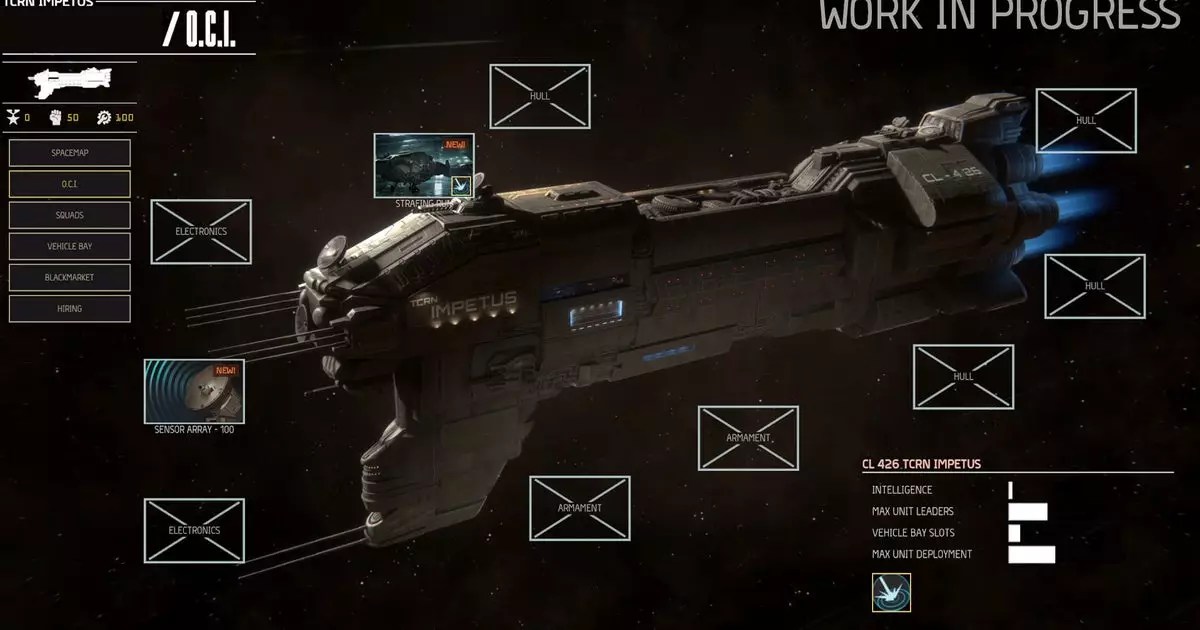The gaming landscape is replete with titles that deftly intertwine tactics and role-playing elements, but few are as ambitious in their execution as Menace, developed by Overhype Studios. As outlined by Staff Sergeant James Archer in his September preview, Menace isn’t merely a game filled with turn-based battles. There exists an intricate strategic layer that adds depth to the overall gameplay, acting as a crucial connector between combat engagements. This article aims to delve into the game’s various mechanics, emphasizing how they coalesce to create a captivating experience.
What sets Menace apart from typical RPGs is its well-defined strategic framework nestled between intense battles. Players return to a starmap of the Wayback solar system, where decision-making assumes a paramount role. It is here that factions vie for dominance and respond to distress signals, necessitating players to assess their priorities continually. Ignoring these requests can lead to a deterioration of your reputation, subtly urging players to engage with the world around them meaningfully.
The game’s resources—promotion points, Operational Capability Improvements (OCI components), and authority points—serve distinct purposes in shaping your journey. Promotion points facilitate squad growth; OCI components enhance your spaceship, the Impetus; and authority points ensure your crew’s morale remains intact. The interplay of these resources fosters a strategic ecosystem that makes every decision weighty.
The narrative surrounding your crew in Menace is one steeped in complexity. Dubbed “motley,” the crew embodies a unique blend of potential and perils. This characterization implies that while they possess the capacity for greatness, they also constitute a significant liability. Players may find themselves negotiating the fallout from rowdy bar fights or the consequences of moonshine production gone awry. Such scenarios encapsulate the quintessential dilemma of resource allocation—should you address an immediate issue, or conserve your assets for future challenges?
Menace’s reliance on crew dynamics adds an engaging twist to the storytelling aspect. Unlike many RPGs that focus solely on character development during battles, Menace integrates the crew’s multifaceted personalities into the broader strategic framework, ensuring that every decision reverberates through the game’s narrative.
In terms of space-based warfare, Menace reportedly elevates preparation to an art form. With the ability to outfit the Impetus with facilities that boost offensive and defensive capabilities, players must continuously evaluate how their choices affect the course of upcoming missions. Among the notable upgrades are options for air support and unit health restoration. Yet, one upgrade appears to reign supreme—the intelligence boost that enhances enemy reconnaissance.
In a game where knowledge can significantly shift the balance of power, the emphasis on reconnaissance over brute force introduces a layer of strategic thinking usually absent in conventional turn-based RPGs. Players are encouraged to be more than mere warriors; they must also be tacticians who understand the battlefield’s nuances.
In Menace, the armory screen serves as a critical locus for customization. Here, players can select an arsenal of weapons, armor, vehicles, and accessories tailored to their squad leaders. Each leader’s unique perk tree allows for individualized strategies, fostering a sense of ownership over the team’s development. Although there are shared perks among characters, the signature traits ensure that no two squad leaders are entirely alike.
This customization aligns seamlessly with the game’s overarching theme: individuality within a collective framework. Each character brings unique strengths and weaknesses to the battlefield, allowing for the potential for diverse strategies that reflect personal playstyles.
While Menace is still in development and more details — such as black market interactions and connected operations — are on the horizon, it is clear that Overhype has crafted a title with considerable ambition. However, the critiques surrounding its strategic elements suggest that the game’s cunning mechanics, while engaging, may not offer groundbreaking innovations.
The term “bread” serves as a metaphor for the game’s strategy—essential yet understated. Menace’s blend of tactical depth and vibrant character narratives shows promise but challenges itself with the expectation to remain both exciting and straightforward. The game is a balancing act: if the strategic layer overshadows the compelling narratives and battles, it risks obscuring what makes it unique. Ultimately, like a well-made sandwich, it is the careful combination of all these layers that will determine Menace’s success when it launches later in the year.


Leave a Reply